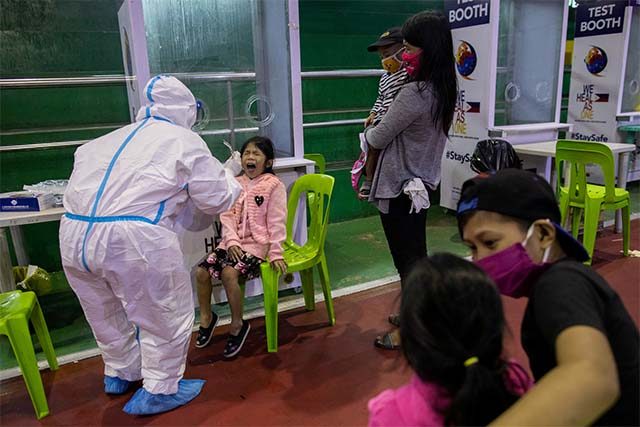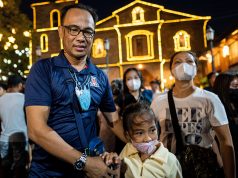
Health Secretary Francisco Duque continued to get hit with criticisms over the health agency’s questionable “mass recovery” initiative following reports of thousands of survivors of the novel coronavirus which causes COVID-19.
This initiative which is also called Oplan Recovery is the Department of Health’s adjustment or response to the updated guidelines of the World Health Organization where symptomatic and asymptomatic cases can already be discharged after a 10-day quarantine without retesting.
However, in the DOH’s interpretation, under its memorandum 2020-0258, the discharged patients are labeled as “recovered.”
This means patients with mild symptoms or those who are not experiencing any symptoms are already tagged or considered recovered after 14 days since the start of symptoms or by date of specimen collection.
This was not indicated in the criteria that the WHO and the US Centers for Disease Control and Prevention have implemented.
Last Sunday, on August 16, the Philippines breached the 160,000-mark in the total number of confirmed cases with 3,420 additional infections, thereby bringing the total to 161,253.
Of these, 46,002 are active and the death toll is 2,665 with 65 new fatalities.
Despite the alarming number of positive cases, what DOH highlighted in its report was the 40,397 new recoveries, which brought the total reported recoveries to 112,586.
‘St. Duque’ and other concerns
Following reports of this record-breaking figures, the name “St. Duque” immediately trended on Twitter as Filipinos expressed their frustrations to the beleaguered official in the form of satirical memes and videos. It reached over 4,800 tweets last weekend.
The name “St. Duque” refers to the supposed “patron saint of healing and recovery” of patients infected with the deadly virus in the Philippines.
San Francisco Duque, patron saint of mass healing
Posted by FTTM on Sunday, August 16, 2020
St. Duque before the announcement of mass recoveries pic.twitter.com/np8hWUE2wG
— AltABSCBN (@AltABSCBN) August 16, 2020
Popular social media personality Mark Averilla, also known as Macoy Dubs, likewise shared a satirical video clip where he pretended to be a parody version of Duque who appeared to be “healing people.”
A rare footage of DOH Sec. Franchismis Chuque mass healing everyone. pic.twitter.com/Y7meNWDysR
— Macoy Dubs (@macoydubs1) August 16, 2020
Averilla also shared another tweet, saying: “St. Francisco Duque, Patron Saint of Mass Healing and Mass Recovery, BALAKAJAN.”
Others, however, aired their ire anew over DOH’s re-classification of cases, calling it deceitful and manipulative.
“We have already mentioned that the new international recovery classification guidelines are not applicable to the Philippines because we don’t have proper patient follow-ups and symptoms surveillance!” one user said.
As of August 17, the DOH announced 3,314 new positive cases which pushed the total number of COVID-19 cases to 164,474.
Of these, there are 112,759 recovered patients and 2,681 deaths.
Gaps found in COVID-19 data reporting
On August 15, the day before the re-tagging of recovered patients, the number of active cases was over 83,109 active cases while the the recoveries only stood at 72,209.
ABS-CBN’s resident data analyst Edson Guido reported that these figures will decrease the next day, which was DOH’s scheduled “mass recovery” application.
Filipinos further speculated that the DOH is manipulating the people for its new interpretation of data.
“’Scheduled ‘mass recovery’” is just a euphemism for “data manipulation,” one Twitter said.
In a Twitter thread on August 15, Guido shared DOH’s gaps in reporting or presenting their data to the public—the case fatality rate and the lag or delayed reporting.
He explained that the country’s case fatality rate is currently low at 1.59% because the rate in the increase of positive cases surpassed the death rates.
Again, ang case fatality rate ay deaths divided by cases. Kung ang deaths mo ay tumataas pero MAS MABILIS ang pagtaas ng cases = BABABA ang case fatality rate
At sumipa nga ang kaso nitong August.
"Deaths lag infections." Ang mga namatay ngayon ay mga kaso from weeks/months ago
— Edson (@EdsonCGuido) August 15, 2020
Another problem is the delayed reconciliation of data from the DOH and the local government units.
“Sa 93 na naireport nung August 12, 49 ay namatay nung July. 30 nung June,” Guido said.
“So kailan natin makikita ang full picture ng mga namatay ng August? Sa Sep? Oct?” he added.
Science organization Earth Shaker Philippines also shared a more specified breakdown of this gap between the DOH and the LGU’s in Metro Manila.
The data was sourced from DOH and respective pages and trackers of each city.
“The two figures might imply two different situations for the people who are checking on them,” the group said.
WHICH IS WHICH? Here's a comparison of the recoveries from the LGU-reported and DOH-reported figures. The gap between the recovery totals is 27,881.
The two figures might imply two different situations for the people who are checking on them. pic.twitter.com/zMgojDPz7Z
— EarthShakerPH (@earthshakerph) August 17, 2020
Statistician Dr. Peter Clayton from the University of the Philippines Pandemic Response Team disclosed another gap, that is, between the ones who tested positive of the virus and those who were classified as confirmed cases.
“Downward direction of the gap is good. DOH is becoming more efficient, but the gap is still huge,” Clayton said.
Aug 15 Data As of Aug 16 data drop:
Confirmed = 157,833 (prev: 153,509)
Individuals Tested Positive = 196,913 (prev: 192,987)Gap = 39,080 (prev: 39,478)
Downward direction of the gap is good. DOH is becoming more efficient, but the gap is STILL HUGE.
— Peter Cayton, the Stats Guy (@PJACaytonPhD) August 17, 2020
Early this August, the national government re-imposed the modified enhanced community quarantine over Mega Manila, which comprises Metro Manila and nearby provinces, due to the surge of cases.
Government officials hoped the tougher lockdown would help reduce the number of infections in the region.









